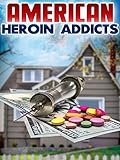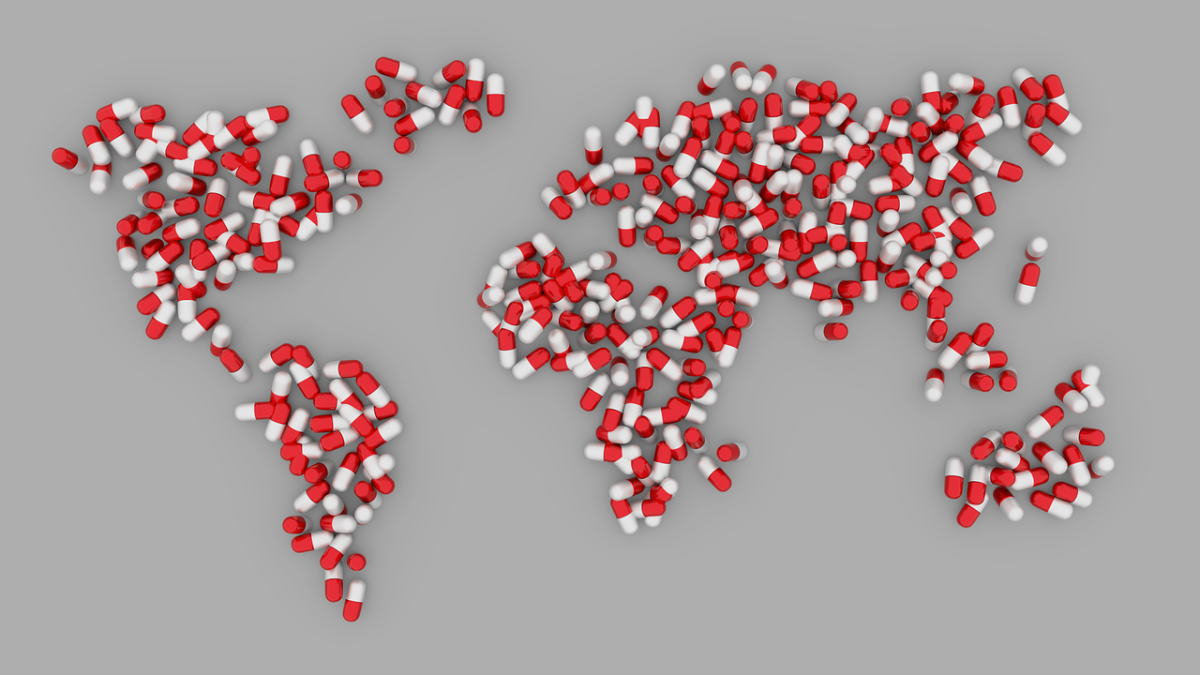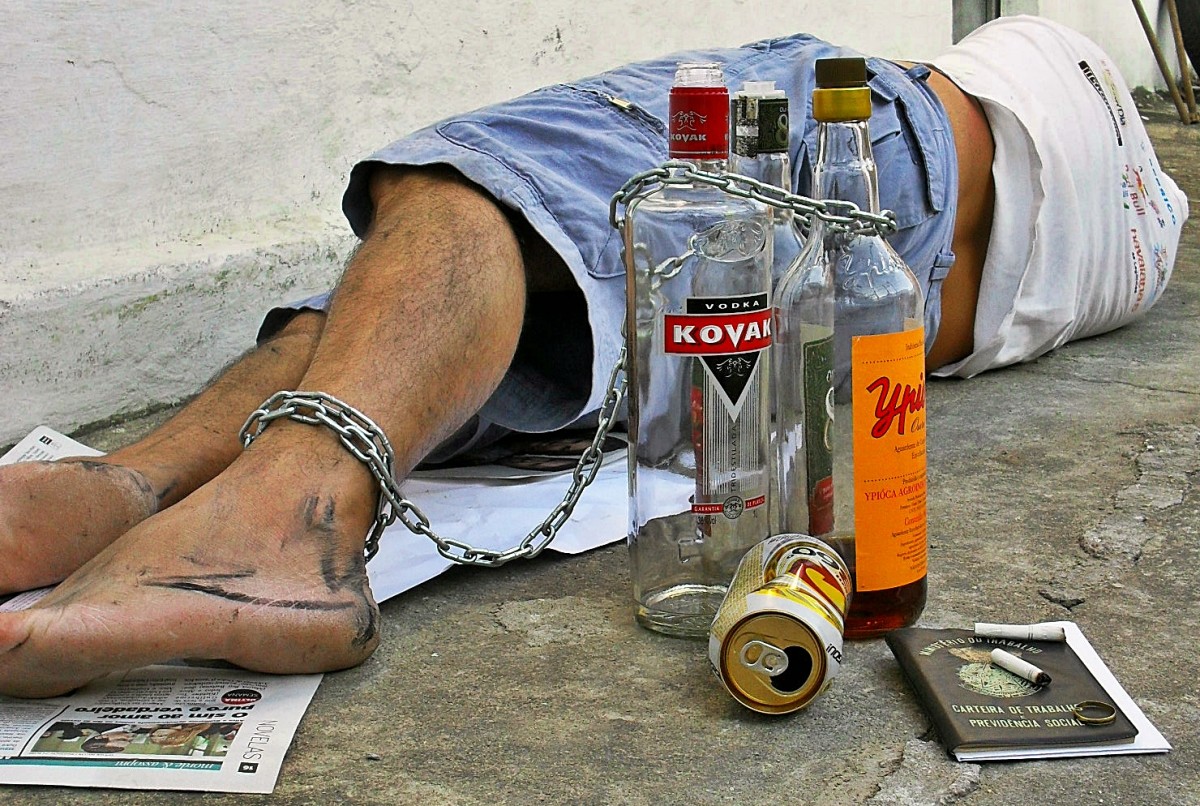History of Heroin and Delaware
Heroin Use and Recovery in Delaware: From a Father’s Perspective Part 2
Welcome to the second installment on Delaware's battles with heroin addiction. In this Hub we will be exploring a little history about the drug and its impact on the State.
Part One An Introduction to Heroin Use in Delaware
Part Two History of Heroin and Delaware
Part Three Heroin Use and Recovery in Delaware the Current Approach
Part Four Heroin Addiction and the Self
Part Five Heroin Recovery A Systemic Approach
Figure 1
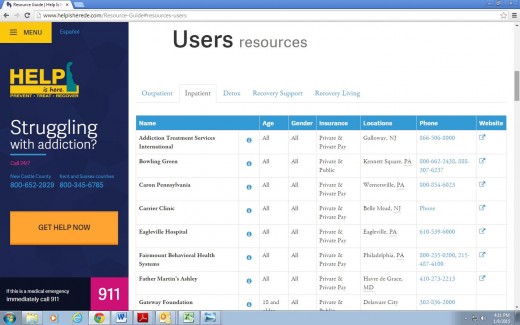
An October 18, 2014, News Journal article clearly identifies the problem for most of Delaware and rural America. “Treatment services are sparse, requiring addicts hitch rides or drive 30 miles to counseling sessions and support group meetings. There are no state-funded detoxification or inpatient rehabilitation centers downstate, as there are in New Castle County. And experts say there is a culture of denial among residents in Kent and Sussex counties about the widespread abuse of heroin.” (Taylor) This phenomenon is not unique to Delaware. Rural areas across the nation are experiencing an explosion of heroin addiction, caused in part by the needed crack down on the illegal use of prescription opiates, and not having viable resources to help the ones who want to break free.
In a letter to the Delaware Health Commission, a mother describes the challenges she faced while trying to get help for her daughter. One of the points that she makes reinforces the lack of facilities. “There is a lack of inpatient detoxification and/or substance abuse treatment facilities for minors in Delaware and too few detoxification centers for adults in our state.” (Jones) In the Kent or Sussex counties there are no inpatient facilities for minors, except if the court assigns the youth to a facility. For families, there only choice is to arrange to have their child sent out of state. Even for adults the options for inpatient services are limited. A quick review of the State of Delaware’s Help is Here, (Figure 1) website, shows Kent and Sussex counties have no listing for an in-patient rehabilitation center and there is only one facility listed as a detoxification center.
Figure 2
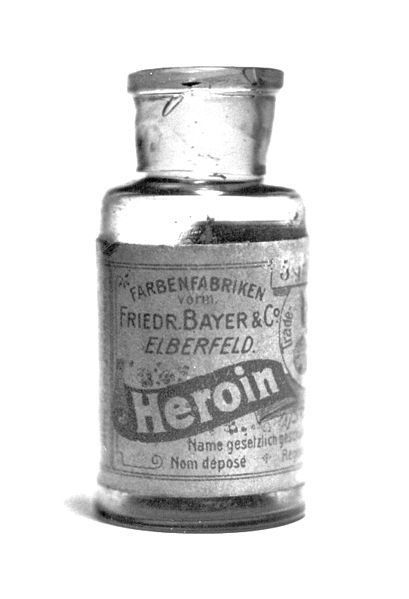
Heroin is not a new problem for Delaware and it is not as if this obstacle appeared overnight. The drug (Figure 2) itself made its commercial introduction to the world in 1898, it was first synthesized in 1874, as a way to combat pain associate with pneumonia and tuberculosis, which at the time had no cure and often lead to a painful death. The opiate was also used as a method of treating morphine addiction. It was once heralded as a wonder drug, but over time, the addictive nature of the narcotic was seen to outweigh any medical benefits and was outlawed in the United States in 1920. Since then, America has been a long-standing underground demand for the drug and as time moved on the problem continued to grow. A March 2002, U.S. Department of Justice (DOJ) report captured the pending problem for Delaware.
Heroin
Heroin, primarily South American, poses the greatest drug threat to Delaware[1]. High purity, low cost heroin is readily available in the state, and the reported rate of heroin abuse among teenagers and young adults is close to the abuse rate for alcohol, the primary substance abused in the state. The number of new abusers, particularly teenagers and young adults, has increased dramatically. Delaware had the fifth highest rate of heroin-related treatment admissions to publicly funded facilities in the nation in 1999. The total annual number of heroin-related treatment admissions to publicly funded facilities was almost twice that of cocaine from 1999 through 2000. Wholesale distribution of heroin in Delaware is extremely rare. Local independent Caucasian dealers are the dominant transporters and retail level heroin distributors. These dealers usually purchase multi-ounce and gram quantities of the drug from Dominican criminal groups and street gangs based in Philadelphia and transport the heroin to Delaware for distribution. (DOJ 5)
The year I moved my family to Delaware, the U.S. Government put the State on notice of this threat. A reasonable question for any parent to ask is what has happened in the 12 years following the report? In a 2012-2013 Combined Behavioral Health Assessment and Plan the DHSS, Division of Substance Abuse and Mental Health (DSAMH) reported, “Heroin admission annually average 2,103 and 25% of total admissions. There is little variation year to year for this period.” (DSAMH) The following table captures by drug the number of treatment admissions to publicly funded facilities for the years 2004-2012 in Delaware.
Primary Drug at Admission
| 2004
| 2005
| 2006
| 2007
| 2008
| 2009
| 2010
| 2011
| 2012
|
Alcohol
| 2,685
| 2,336
| 2,142
| 2,267
| 2,107
| 2,127
| 1,924
| 1,729
| 1,579
|
Heroin
| 2,390
| 2,234
| 2,113
| 2,080
| 2,120
| 1,965
| 1,529
| 1,263
| 1,845
|
Cocaine
| 527
| 533
| 481
| 643
| 548
| 429
| 301
| 247
| 262
|
Crack Cocaine
| 1,017
| 943
| 908
| 831
| 680
| 457
| 284
| 183
| 177
|
Marijuana/Hashish
| 1,666
| 1,801
| 1,875
| 1,933
| 1,613
| 1,806
| 1,539
| 1,348
| 1,161
|
Amphetamine
| 21
| 18
| 43
| 27
| 28
| 12
| 13
| 10
| 20
|
Other Opiates & Synthetics
| 252
| 286
| 433
| 736
| 927
| 1,400
| 1,359
| 1,643
| 1,793
|
Other/Missing/ Unknown/ None
| 324
| 329
| 463
| 319
| 396
| 394
| 426
| 439
| 659
|
Noticed what happens between 2004 and 2012 both heroin and other opiates individually replaces alcohol as the number one reason why people are admitted in State funded programs. Nationally in 2012, opiates accounts 30% admissions in publically funded programs, while alcohol is 40%. (TEDS 7) In Delaware heroin accounts for 24.6% of admissions, other opiates makeup another 23.9%, and alcohol just 21%. Even with its limited resources the number of heroin and opiates admission is roughly 20% higher than the national average.
In a DHSS, DSAMH, fall 2014 newsletter, a New Castle Police Department claim was published, “In 2014, we have seen a 2,206% increase in heroin usage, an 860% increase in arrests, and 2,000% increase in the seizure of heroin product in the last two years.”(DSAMH) These numbers represent an almost unimaginable increase in heroin related activity. The rapid increase in the drug popularity is occurring just one short year after the state started to crack down the misuse of prescription painkillers.
The mythology surrounding the drug creates challenges in recovery efforts. One commonly held belief is once you try it and the user is an addict. The following is from a discussion with a former user, which describes the progression of addiction. “To be blunt, I have literally never met anyone who was introduced to heroin with a needle. That's roughly the equivalent of taking your first drink of alcohol by butt-chugging moonshine out of a gas can. The reality is a lot less abrupt, and a lot scarier: Most people start by popping and smoking pills. In that stage, it never seems like a problem, because you can use daily for weeks with no withdrawal effects whatsoever. I got totally wasted with my girlfriend Sally every night and woke up every morning clear as a bell, so it was super easy to think "Hey, why not use again?" I never had cravings, so it didn't feel like a real problem -- but somewhere in that process, a switch got flipped.” (Sargent, J.F. and Ed Byrne)
Supporting Sargent’s claim is information on the NIDA website, indicating 23% of people who try the drug become addicted to the drug. However, the nature of the drug very quickly creates a dependency while giving the user a false perception they are in control. In a scene from the play, Dope, the main character, Louie, is challenged by his friends about the addictive nature of the narcotic.
Marc. Is it true you can’t stop?
Louie. (Walking away—they follow.) You believe everything you hear?
Marc. Well, I heard it. Everybody says it, and I just thought—
Louie. Man, if I wanted, I could stop just like that. Sure.
Marc. Have you tried?
Louie. (Pauses.) Why should I? (Shrugs.)
Hum. I heard it takes ten years off your life.
Louie. So? Who wants to live a hundred years around here in this—this—cage! (The word turns him on)
Hum. That stuff must do a lot for you. (Lee 9)
When Louie was asked if he tried to quit, he quickly diverted the conversation away. The book, Drug Abuse Sourcebook, edited by Laura Larsen, talks about the physical side of addiction and the control it holds over the user. “Physical dependency is a consequence of chronic opiate use, and withdrawal takes place when drug use is discontinued. The intensity and character the physical symptoms experienced during withdrawal are directly related to the duration of use, and the health and personality of the user. The symptoms usually appear shortly before the next scheduled dose.” (Larsen 233) They further explain, “chronic use of heroin leads to physical dependence, a state in which the body has adapted to the presence of the drug. If a dependent user reduces or stops use of the drug abruptly, he or she may experience symptoms of withdrawal.” (Larsen 241)
One of the reasons the drug is so addictive is the speed at which it enters the brain. Over time, the user builds up a level of tolerance, which requires more of the drug to maintain the same level of intensity. As the need increases, the possibility of accidental overdosing becomes a reality. In most cases when a person falls asleep, the body just “forgets” how to breathe.
According to the CDC, “100 people die from drug overdoses every day in the United States.” (CDC) Another way to think about this number is, at the stated rate it would take 20 days to depopulate the town I graduated High School. According to a USA Today report, the New Castle County, Delaware Sheriff’s department put a marker on a map for each overdoes related death as a part of their morning briefing. “Heroin is killing more Delawareans each month, and as the number of overdose deaths increases so does the number of skulls and crossbones dotting the maps displayed on the big screens. The symbols are reminders of every life lost to an alcohol or drug overdose, with cheap and plentiful heroin pushing Delaware deaths to an average of 15 a month.” (Taylor)
The Next Chapter:
Here ends part two of the series. In the next Hub, The Current Approach, highlights the fact Delaware residents have access to greater number of recovery resources if they incarcerated, in a court ordered program, or on public assistance then if they were a State Employee covered by insurance.
Footnote
[1] Highlight and underline was done by me
Do you know someone addicted to heroin?
References:
Center for Disease Control and Prevention. Policy Impact: Prescription Painkiller Overdoses. http://www.cdc.gov/homeandrecreationalsafety/rxbrief/. Page last reviewed: December 19, 2011 - historical document. Page last updated: July 2, 2013 (Accessed January 8, 2015)
Center for Disease Control and Prevention. CDC Poison brief 2010 http://www.cdc.gov/homeandrecreationalsafety/pdf/poison-issue-brief.pdf. July 2010. (Accessed January 2, 2015)
Division of Public Health. Help is Here Delaware. http://www.helpisherede.com. (Accessed January 320, 2015)
Department of Justice: National Drug Intelligence Center. Delaware Drug Threat Assessment. Product No. 2002-S0379DE-001. http://www.drugabuse.gov/publications/research-reports/heroin/scope-heroin-use-in-united-states. Page last Updated November 2014. (Accessed December 20, 2015)
Department of Justice; Civil Rights Division; Disability Rights Section. QUESTIONS AND ANSWERS: THE AMERICANS WITH DISABILITIES ACT AND HIRING POLICE OFFICERS. http://www.ada.gov/copsq7a.htm. March25, 1997 (Access February 18, 2015)
Division of Substance Abuse and Mental Health. Progress Notes: DSAMH’s Information Resource for Staff, Providers and Stakeholders. Department of Health and Social Services. http://dhss.delaware.gov/dhss/dsamh/files/fall2014newsletter.pdf. Fall 2014. (Accessed January 17, 2015)
Health and Social Services, Department of. Substance Abuse and Mental Health Services Administration. Treatment Episode Data Set (TEDS) 2002 - 2012 National Admissions to Substance Abuse Treatment Services. July 2014
Larsen, Laura, editor. Drug Abuse a Sourcebook. Omnigraphics Inc. 2000
Lee, Maryat, Dope. Samuel French. 1951, 1953, 1967, 1979, and 1981
Sargent, J.F., and Ed Byrne. Cracked. 5 Unexpected Things I Learned from Being a Heroin Addict. http://www.cracked.com/article_21017_5-unexpected-things-i-learned-from-being-heroin-addict.html#ixzz3NzVPnij1. February 14, 2014. (Accessed January 31, 2015)
Taylor, Adam. Heroin treatment far away for many in Del.: DRUG ADDICTION THRIVES IN KENT AND SUSSEX COUNTIES. SERVICES ARE BADLY NEEDED. The News Journal. http://www.delawareonline.com/story/news/local/heroindelaware/2014/10/18/downstate-delawares-hidden-heroin-epidemic/17509565/. USA Today. October 18, 2014. (Accessed December 17, 2014)
Taylor, Adam. Scanning the battlefield in war on heroin: DELAWARE POLICE CONVINCED EVERY BLIP OF CRIMINAL ACTIVITY DESERVES SCRUTINY. http://www.usatoday.com/story/news/nation-now/2014/06/12/police-crackdowns-battle-heroin/9714507/. USA Today. June 12, 2014. (Accessed December 17, 2014)
Tables
Table 1: Primary Drug at Time of Admission: Division of Substance Abuse and Mental Health. Department of Health and Social Services. http://www.dhss.delaware.gov/dsamh/files/aod_adult_admissions.pdf. May 21, 2013. (Accessed January 15, 2015)
Figures
Figure 1: Screen Shot of Help is Here De. Helpisherede.com
Figure 2: Bottle of Prescription Heroin. http://www.historytoday.com/ian-scott/heroin-hundred-year-habit

